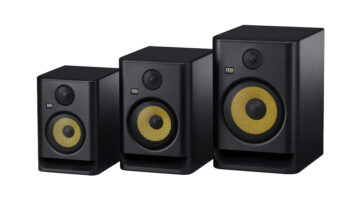“Bitstream” columnist Oliver Masciarotte once again scours his audio data dictionary to come up with another round of today’s top IT terms as they apply to the audio pro. Italicized words will be, or have been, defined in the glossary, some in upcoming issues.
Microcontroller: complete computers on a chip and contain, in addition to a CPU, memory and I/O. Microcontrollers are often used by embedded systems working transparently for the user.
mLAN: a well-conceived audio production — specific protocol overlay developed by Yamaha for the FireWire 1394 standard. As a proprietary protocol with licensing fees, mLAN has not enjoyed wide industry uptake.
MP3 (MPEG-1, Layer III): MP3, a perceptual subband/transform codec, is part of the groundbreaking Motion Picture Experts Group (MPEG) standard for lossy compression of audio/video data. The motion video portion of the MPEG-1 standard was derived from the Joint Picture Experts Group (JPEG) standard for lossy compression of still images.
MPEG (Motion Picture Experts Group): An offshoot of the still-image JPEG, MPEG creates and licenses standards for digital multimedia file formats and infrastructure. The MPEG is under the ISO umbrella.
MPT (Music Pictures Television): the three consumables — audio, video and still images — driving consumer adoption of storage and converged products.
Multicast, multicasting: an Ethernet addressing scheme that is used to target specific packets at specific device types (sort of MIDI System Exclusive for IP) or for broadcasting to all nodes simultaneously. Multicasting is a one-to-many approach to data distribution.
Name resolution: refers to domain name resolution, a process whereby the domain name system is used to map human-readable host names to their corresponding IP addresses. This is the process that’s used to map human-readable Web addresses, such as www.apple.com, onto its “true” IP address, which is <17.112.152.32>.
NAS (Network-Attached Storage): a stand-alone storage “appliance” that provides file-level access via a network connection, typically Ethernet. NAS can reduce management overhead and eliminate unreliable cabling while increasing in-band traffic.
Network: two or more computers connected to pass data, metadata, management and control messages between nodes.
NFS (Network File System): a protocol for remote disk access over a network. NFS, a de facto standard developed by Sun Microsystems, uses UDP rather than the relatively more robust TCP protocol. In some circles, NFS also stands for Nightmare File System for the alleged unreliability of early Sun networks.
NIC (Network Interface Card or Controller): a hardware interface installed in a computer that provides a physical connection to a network.
Node: a logical instance of a computer attached to a network. Nodes are usually instantiated by an NIC.
OC-nn (Optical Carrier-nn): Optical Carrier designations are used by telcos to denote SONET service tiers. OC-48 is equal to 48 times 51.84 = 2,488.32 megabits per second, while OC-192 is fat enough to seamlessly interoperate with IP-based 10Gig Ethernet.
Operating system: the low-level software that provides a computer’s basic features and capabilities. Operating systems can be linked to specific platforms such as Mac OS on PPC or may, like BSD Unix, be available for a wide variety of CPUs.
OSI Model: The OSI, or Open Systems Interconnect (Reference) Model, is an abstract hierarchy developed by the ISO that provides a standardized conceptual framework for the functional components of a heterogeneous computer network. These components are a collection or “stack” of protocols arranged into seven “layers.” Layer 1, the PHY layer, deals with the literal nuts and bolts, while layer 7 formalizes the applications that interact with the human end-user.
Out-of-band: When an auxiliary signaling channel is relegated to a separate PHY to not rob bandwidth on the primary channel, that separation of signal paths is referred to as out-of-band communication. Out-of-band signaling is the opposite of in-band communication and both usually refer to the passage of management, control or metadata related to network resources such as SAN nodes and LAN servers.
Overhead: In IT land, overhead refers to any service, protocol or process that requires resources in excess of those needed by default.
P2P (Peer to Peer): a flat network hierarchy in which clients interact directly without the intervention of servers.
Packet, to packetize: A packet is an autonomous unit of data encapsulated by a protocol header and/or trailer. In general, the header provides network control and routing information to direct the packet through the fabric, while the trailer contains data to ensure packets are not delivered with corrupted contents. Packetizing refers to encapsulating data into packet form.
Packet switched: A stateless network transport method in which individual packets are routed between network nodes via a combination of packet header addressing and complex routing algorithms designed to optimize throughput. All nodes on the network are always on and able to send, receive and forward packets.
PAN (Personal Area Network): a network, typically wireless, that operates within a very small area. PANs usually provide connectivity for miniature peripherals that someone can carry on his or her person.
Parallel: The opposite of serial, parallel refers to moving data in a side-by-side, simultaneous fashion, either physically or virtually, whereby each clock cycle moves or processes entire data bytes.
PB, petabyte: 1,024 terabytes. A petabyte, which was once thought to be an absurdly large amount of data, is currently not an uncommon amount of aggregate storage in the IT departments of enterprise and large entertainment companies.
PCI (Peripheral Component Interconnect): Originally an ad hoc standard introduced by Intel, PCI has become the world’s most widely adopted local bus standard. The current PCI-X 2.0 64-bit bus standard provides a compact form factor and supports signaling speeds up to 533 million transfers per second, up to 4.3 gigabytes per second of bandwidth, which is 32 times faster than the first generation.
Perceptual subband/transform codec: codecs designed to reduce the data rate and/or size of a digital audio file. The encoder applies a psychoacoustic model to estimate whether, in any particular band of frequencies, the signal strength in that band is above or below the perceptual threshold relative to adjacent frequency bands. If the signal is above the masking threshold, then a spectral coefficient or value is generated to represent the signal in that band and the coefficient becomes the stand-in, or representation of, the actual audio in that band. If the signal is not above the predicted masking threshold, then that band of frequencies is tossed out to reduce the final size of the essence.
OMas took a break from reality to once again experience the feeling of sand between his toes. He put this installment together seaside while under the influence of SahaleSnacks.com’s sweet/savory goodness and Elvis Costello’s tasty When I Was Cruel.





